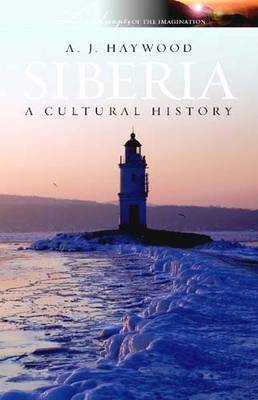Landscapes of the Imagination
1 total work
Before Russians crossed the Urals Mountains in the sixteenth century to settle their 'colony' in North Asia, they heard rumours about bountiful fur, of bizarre people without eyes who ate by shrugging their shoulders and of a land where trees exploded from cold. This region of frozen tundra, endless forest and humming steppe between the Urals and the Pacific Ocean was a vast, strange and frightening paradise. It was Siberia. Siberia is a cradle of civilizations, the birthplace of ancient Turkic empires and home to the cultures of indigenes, including peoples whose ancestors migrated to the Americas. It was a promised land to which bonded peasants could flee their cruel masters, yet also a 'white hell' across which exiles shuffled in felt shoes and chains. If in Stalin s era Siberia became synonymous with the gulag, today it is a vast region of bustling metropolises and magnificent landscapes, a place where the humdrum, the beautiful and the bizarre ignite the imagination. Tracing the historical contours of Siberia, A. J. Haywood offers a detailed account of the architectural and cultural landmarks of cities such as Irkutsk, Tobolsk, Barnaul and Novosibirsk.
MAGNIFICENT RIVERS AND LAKES: Lake Baikal, the Ob, Irtysh, Yenisey, Angara, Lena and Amur rivers. Russian writer Anton Chekhov described some, polar explorer Fridtjof Nansen and the eccentric British merchant captain Joseph Wiggins navigated others. THE CITIES AND THE RAILWAY: High fashion and low life, traffic-choked streets and chimney stacks. Siberia s cities bring a madding crowd far into the remote taiga--linked by the Trans-Siberian Railway, the nineteenth-century camel track . MYSTICS, MOUNTAINS AND ANCIENT CIVILIZATIONS: Nikolay Rerikh sought the mystical kingdom of Shambhala here, Russian writer Valentin Rasputin was confused by its beauty, while local Altaians themselves see their republic of mountains and steppe as a Central Asian heaven on earth,
MAGNIFICENT RIVERS AND LAKES: Lake Baikal, the Ob, Irtysh, Yenisey, Angara, Lena and Amur rivers. Russian writer Anton Chekhov described some, polar explorer Fridtjof Nansen and the eccentric British merchant captain Joseph Wiggins navigated others. THE CITIES AND THE RAILWAY: High fashion and low life, traffic-choked streets and chimney stacks. Siberia s cities bring a madding crowd far into the remote taiga--linked by the Trans-Siberian Railway, the nineteenth-century camel track . MYSTICS, MOUNTAINS AND ANCIENT CIVILIZATIONS: Nikolay Rerikh sought the mystical kingdom of Shambhala here, Russian writer Valentin Rasputin was confused by its beauty, while local Altaians themselves see their republic of mountains and steppe as a Central Asian heaven on earth,
